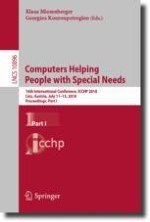1 Introduction
2 State of the Art
-
requirements elicitation and discovery,
-
requirements modelling,
-
analysis and specification.
-
Traditional techniques: These techniques include questionnaires, surveys and analysis of existing documentation to collect the requirements of end-users [8].
-
Prototyping: Requirements are collected by prototyping either with pen and paper or with a real software product. This allows developers, designers and end-users to work closely together and specify the requirements.
-
Group elicitation techniques: Group techniques aim to foster stakeholder agreement and buy-in, while exploiting team dynamics to elicit a richer understanding of the needs [7]. Common examples for this techniques include brainstorming, focus groups, rapid application development and workshops.
-
Contextual techniques: Here the requirements are gathered by observation of costumers and end-users directly at the customer’s workplace. Examples for contextual techniques are participant observation where the observer gets the requirements from observing team discussions, interviews, documents and non-verbal interaction.
-
Cognitive techniques: Cognitive techniques allow analyzing and gathering information up to the human thinking level [9]. They include protocol analysis, where an experts performs a task while thinking aloud and an observer documents the cognitive processes used to perform the task. Another method is card sorting, where stakeholders are asked to sort cards into groups.
-
Model-driven techniques: These techniques analyze the information that is gathered by the system and use this model to drive the elicitation process.
3 Design and Method
-
The IPAR method by Janice Ollerton is a variation of the Participatory Action Research (PAR). IPAR includes people with cognitive disabilities in all steps. IPAR provides a framework for integrative participatory action research (fusion of integrative research approaches and participatory action research). It is a practical, alternative methodology for integrative research design with accessible data collection and analysis tools. IPAR questions the traditional research relationships in which research is conducted instead of with people with intellectual disabilities.
-
UCD [16] is a design methodology that puts users at the heart of the design process. In particular when it comes to systems and appliances for a mass-consumer market the involvement of user groups at all stages of research processes has proven to be essential for better usability and improved product/output quality. Studies underline that reasonable investment in UCD leads to substantial return in terms of higher efficiency, less maintenance, less complaints and higher usage/client rates.
-
Evaluating current methods and tools for requirements engineering: Literature research and well-known findings of existing tools will be examined and formally tested if they suit the needs of the target group.
-
Developing new methods that suites the needs of the target group: This will be done by Design-Based Research. DBR uses a mix of methods to analyse and improve the methods of UCD [3].
4 Approach
4.1 Recruiting and Instruction
4.2 Requirement Analysis and Methods
-
Focus group: A focus group shares their thoughts, feelings and attitudes towards an already existing software product or prototype [10]. This is especially useful as input for new software systems as feedback from users identify useful features and problems in existing systems. The focus group is a moderated group discussion. First, the topic/task of the session is determined. Usually 6–10 peer researchers or potential target group members participate in a session. They share their attitudes and thoughts, for example about an existing software product or prototype. These results help to review existing concepts and to gain new ideas and input for new software systems. A moderator chairs the session by providing help, asks questions, sums up and makes sure that the focus is not lost during the discussions. This method can be used in any phase of the UCD.
-
User stories: This method provides an alternative to the focus group. The requirements of the user are collected at the beginning of a development by user stories of himself and formally documented to identify the extent of a system [11]. In doing so, the user goals and intentions are e.g. noted on an index card. In the simplest case, these can be just one or two sentences. Then a priority is given by the peer researcher (from 1 to 5 where 1 is the highest priority, or high, medium, low).
-
Use cases: Here, peer researchers can have a voice from the user’s perspective. They can report on their real-life experiences and share their thoughts on what applications of a system or product they needed [12]. This specifies the requirements for a system and defines the features that the system should have for the end users. The functional variety of a product or software is broken down into understandable and related units. Use cases are also an instrument to find out who should use the product and what the product should do for the user.
-
Storyboard: Storyboards use illustrations/images that are shown one after the other, for example to visualize an interactive media sequence in advance [13]. It illustrates interactions between a person and the product or software. Peer researchers are then able to use these images to contribute their own ideas and views on the required features of the software or product.
-
The Easy Cognitive Walkthrough: This method is a modified version of the cognitive walkthrough method - a procedure in which peer researchers, as experts, with or without the support of a test moderator, perform tasks with the product that were previously described as a typical task, taking into account the expected knowledge and skills of the target group [14]. Each step is analysed by the co-researchers from the perspective of another user and thus problems and required features should be identified.
